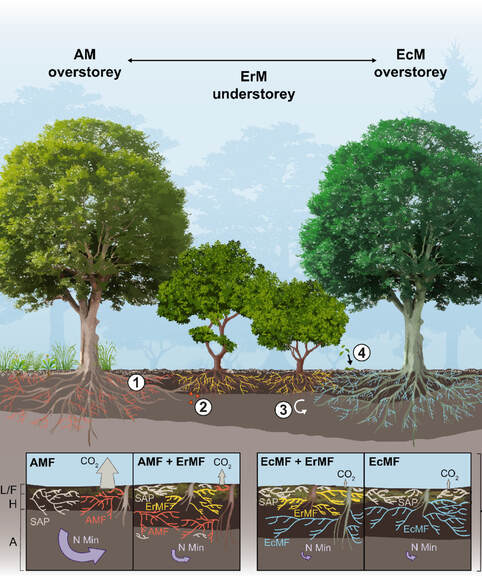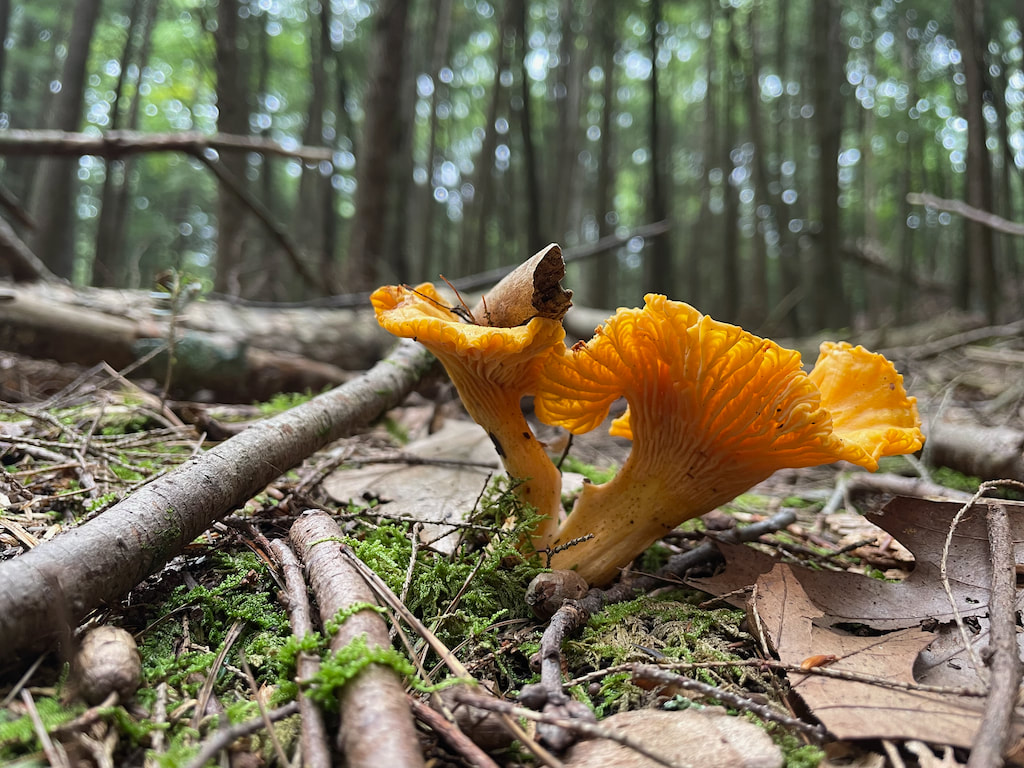|
Mycorrhizal fungi form symbiotic relationships with ~90% of plant species, and the type of mycorrhizal association can strongly influence soil carbon and nitrogen dynamics. Most work investigating these effects in forests has primarily focused on the mycorrhizal associations of overstory trees, which associate with arbuscular (AM) and/or ectomycorrhizal (EcM) fungi. However, a third type of mycorrhizal fungi--ericoid mycorrhizal (ErM) fungi--associates with some common species of understory shrubs, including mountain laurel, blueberries, and rhododendron. Through a series of empirical papers (Ward et al. 2021 and more forthcoming) and a literature review (Ward et al. 2022), we show that interactions between understory ErM shrubs and overstory tree mycorrhizal associations can strongly influence surface organic matter accumulation and soil nutrient dynamics in forests.
There is growing understanding of the importance of tree mycorrhizal associations for predicting soil carbon storage in forests as well as biogeochemical responses to global change. Our research shows that exclusion of co-occurring ErM shrubs can drastically alter interpretations of the effects of AM versus EcM trees. In particular, we found that co-occurring ErM shrubs increase surface organic matter accumulation to a greater extent under AM trees than under EcM trees. Studies that do not account for the presence of ErM shrubs in AM-dominated forests could therefore underestimate soil carbon storage. As the distribution and abundance of trees and understory shrubs shift in response to global changes, co-occurrence of plant mycorrhizal types will also change. Therefore, these findings also have important implications for soil carbon and nitrogen dynamics under changing conditions. |
Relevant publications and popular articles
Ward EB, MC Duguid, SE Kuebbing, JL Lendemer, and MA Bradford. 2022. The functional role of ericoid mycorrhizal plants and fungi on carbon and nitrogen dynamics in forests. New Phytologist.
PDF
Ward EB, MC Duguid, SE Kuebbing, JL Lendemer, RJ Warren II, and MA Bradford. 2021. Ericoid mycorrhizal shrubs alter the relationship between tree mycorrhizal dominance and soil carbon and nitrogen. Journal of Ecology 109: 3524-3540.
PDF
Article for the Journal of Ecology blog, 2022
Article for The Overstory, The Forest School newsletter, Yale School of the Environment, 2021
Ward EB, MC Duguid, SE Kuebbing, JL Lendemer, RJ Warren II, and MA Bradford. 2021. Ericoid mycorrhizal shrubs alter the relationship between tree mycorrhizal dominance and soil carbon and nitrogen. Journal of Ecology 109: 3524-3540.
Article for the Journal of Ecology blog, 2022
Article for The Overstory, The Forest School newsletter, Yale School of the Environment, 2021


